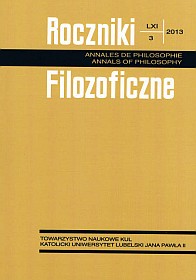Universal Grammar: Ray Jackendoff versus Noam Chomsky
Abstract
The most controversial aspect of generative grammar of Chomsky was a hypothesis that humans have a specific cognitive innate structure in language acquisition, called afterwards the Universal Grammar (UG) hypothesis. That approach was consequently sustained by him in Syntactic Structures, Aspects of The Theory of Syntax, and The Minimalist Program. In fact, Chomsky’s analytic attention was mostly focused on the structure of the syntax of language, that in turn is to generate different phonological structures as well as semantic “interpretation” respectively. Identifying of UG with a deep-structure level of a language did not influenced in solving a problem of innate cognitive structure of humans. Ray Jackendoff, grown up among the generativists, does not share the ‘syntactocentric’ approach of Chomsky proposing the ‘parallel architecture’ in which phonological, syntactic and semantic levels are reciprocally interfaced in the program of ‘biolinguistics’ that is to encourage the necessary culture of inter-scientific collaboration. By means of his theory of conceptual semantics Jackendoff tries to show that a system of concepts expressed in human language is an autonomous generative component of human brain/mind that processed out of evolution.
References
Chlewiński Zdzisław (red.) 1999, Modele umysłu, (seria: Nowe tendencje w psychologii 1), Warszawa: Wydawnictwo Naukowe PWN.
Chomsky Noam A. 1965, Aspects of the Theory of Syntax, Cambridge MA: MIT Press.
Chomsky Noam A. 1966, Cartesian Linguistics. A Chapter in the History of Rationalist Thought, New York: Harper and Row (Third Edition edited with a new introduction by J. McGilvray, Cambridge: Cambridge University Press 2009).
Chomsky Noam A. 1975, Reflections on Language, New York: Pantheon.
Chomsky Noam A. 1979, Language and Responsibility, Hassocks, Sussex: The Harvester Press.
Chomsky Noam A. 1982, On the Representation of Form and Function, [w:] J. Mehler, T.C. Walker, M. Garrett (eds.), Perspectives on Mental Representation, London: Erlbaum.
Chomsky Noam A. 1995, The Minimalist Program, (seria: Current Studies in Linguistics 28), Cambridge, MA: MIT Press.
Culicover Peter W., Jackendoff Ray 2005, Simpler Syntax, Oxford-New York: Oxford University Press.
Dowty David R. 1979, Word Meaning and Montague Grammar. The Semantics of Verbs and Times in Generative Semantics and in Montague’s PTQ, Dordrecht-Boston-London: D. Reidel Publishing Company.
Dowty David R., Wall R.E., Peters Stanley 1981, Introduction to Montague Semantics, Dordrecht: Kluwer Academic Publishers.
Fodor Jerry A. 2008, LOT 2: The Language of Thought Revisited, Oxford: Oxford University Press (pol. Język myśli: LOT 2, przeł. W.M. Hensel, przedmową opatrzył R. Piłat, Warszawa: Wydawnictwo Naukowe PWN 2011).
Hajnicz Elżbieta 2006, O poszukiwaniu jednorożców, czyli semantyka możliwych światów w gramatyce Montague, (Prace Instytutu Podstaw Informatyki PAN, nr 995), Warszawa.
Hajnicz Elżbieta 2006a, Syntaktyczna i semantyczna analiza wybranych konstrukcji języka polskiego za pomocą gramatyki Montague, (Prace Instytutu Podstaw Informatyki PAN, nr 996), Warszawa.
Jackendoff Ray 1983, Semantics and Cognition, (seria: Current Studies in Linguistics 8), Cambridge, MA–London: MIT Press.
Jackendoff Ray 1987, Consciousness and the Computational Mind, Cambridge, MA: MIT Press.
Jackendoff Ray 1990, Semantic Structures, (seria: Current Studies in Linguistics 18), Cambridge, MA–London: MIT Press.
Jackendoff Ray 1992, Languages of the Mind. Essays on Mental Representation, Cambridge, MA–London: MIT Press (tłum. rozdz. 2: What is a concept – Czym jest pojęcie, że człowiek może je uchwycić, przeł. M. Kowalczyk, [w:] Chlewiński (red.) 1999, s. 100-143).
Jackendoff Ray 1994, Patterns in the Mind: Language and Human Nature, London: Harvester Wheatsheaf–New York: Basic Books.
Jackendoff Ray 1997, The Architecture of the Language Faculty, (seria: Linguistic Inquiry Monographs 28), Cambridge, MA–London: MIT Press.
Jackendoff Ray 2002, Foundations of Language: Brain, Meaning, Grammar, Evolution, Oxford–New York: Oxford University Press.
Jackendoff Ray 2007, Language, Consciousness, Culture. Essays on Mental Structure, Cambridge, MA: The MIT Press.
Lewis David 1972, General semantics, [w:] Semantics of natural languages, ed. by D. Davidson and G. Harman, Dordrecht: D. Reidel, s. 169-218.
Lyons John 1970, Chomsky, (seria: Modern Masters), London: Fontana/Collins, 19913 (pol. Chomsky, przeł. B. Stanosz, Warszawa: Wiedza Powszechna 19752, 19983).
Miłkowski Marcin, Poczobut Robert (red.) 2012, Przewodnik po filozofii umysłu, Kraków: Wydawnictwo WAM.
Montague Richard 1970, Universal Grammar, „Theoria” 36, s. 373-398 (przedruk w: Formal Philosophy. Selected Papers of Richard Montague, ed. by Richmond H. Thomason, New Haven: Yale University Press 1974, s. 222-246).
Paśniczek Jacek 1991, Niestandardowe światy możliwe, [w:] M. Omyła (red.), Szkice z semantyki i ontologii sytuacji, (seria: Biblioteka Myśli Semiotycznej 9), Warszawa: Polskie Towarzystwo Semiotyczne, s. 47-52.
Pelc Jerzy (red.) 1991, Prace z pragmatyki, semantyki i metodologii semiotyki, Wybór, wstęp i opracowanie Jerzy Pelc, (seria: Biblioteka Myśli Semiotycznej 11), Wrocław: Ossolineum.
Piasecki Marek 1993, Modelowanie zdań twierdzących języka polskiego za pomocą formuł rachunku intensjonalnego, Wydział Elektroniki Politechniki Wrocławskiej (praca magisterska).
Piasecki Marek 2004, Selektywne wprowadzenie do semantyki formalnej, [w:] J. Szymanik, M. Zajenkowski (red.), Kognitywistyka. O umyśle umyślnie i nieumyślnie, Warszawa: Koło Filozoficzne przy MISH, s. 113-155.
Piłat Robert 1999, Umysł jako model świata, Warszawa: Wydawnictwo IFiS PAN.
Piłat Robert 2012, Wyobrażenia, modele umysłowe, pojęcia, [w:] Miłkowski, Poczobut (red.) 2012, s. 253-310.
Pinker Steven 1984, Language Learnability and Language Development, Cambridge, MA–London: Harvard University Press.
Rogalski Andrzej K. 2012, Logika języka a gramatyka. Gramatyka spekulatywna a wybrane współczesne teorie lingwistyczne, Lublin: Wydawnictwo KUL.
Rumelhart David E. 1993, The architecture of mind: A connectionist approach, [w:] M.J. Posner (ed.), Foundation of Cognitive Science, Boston: The Bredford Books MIT Press, s. 133-159 (pol. Architektura umysłu. Podejście koneksyjne, przeł. H. Grzegołowska-Klarkowska, [w:] Chlewiński (red.) 1999, s. 240-272).
Wróbel Szymon 2010, Umysł, gramatyka, ewolucja. Wykłady z filozofii umysłu, Warszawa: Wydawnictwo Naukowe PWN.
Żegleń Urszula 2012, Treść i reprezentacje umysłowe, [w:] Miłkowski, Poczobut (red.) 2012, s. 213-252.
Copyright (c) 2013 Roczniki Filozoficzne

This work is licensed under a Creative Commons Attribution-NonCommercial-NoDerivatives 4.0 International License.





